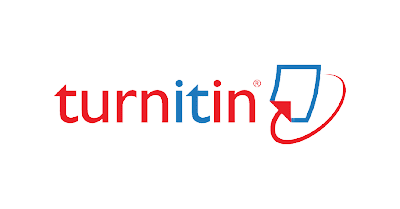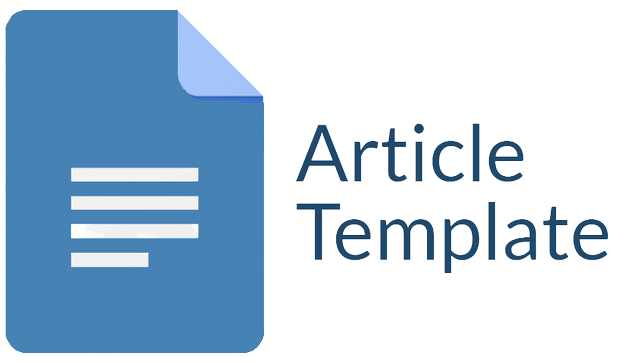PEMILIHAN TIPE PONDASI DALAM DENGAN MENGGUNAKAN METODE AHP
Abstract
The environmental impact arising from the use of foundations that require limited heavy equipment maneuverability has become a recurring issue in construction projects. Construction sites located on clayey soils necessitate special treatment for foundation structures, consuming substantial time and resources. This poses a challenge in construction projects with tight schedules, as every construction phase is constrained by available funds. Data collected through interviews and questionnaires with relevant stakeholders are processed using the Analytical Hierarchy Process (AHP). Bore Pile foundations, is selected as the preferred choice. This research concludes that, among the options considered, Bore Pile foundations are the most suitable. It ranks second, with Well foundations in the second position and Pile foundations in the third. Therefore, Bore Pile foundations are recommended for construction projects in this context. It should be noted that this study is limited to the Gorontalo region's educational facilities, and further research is necessary for different locations. This research sheds light on the importance of selecting environmentally friendly foundation types in construction projects, particularly in regions with specific soil characteristics like clayey soil.
Downloads
References
Akil Ade Iskandar. (2017). Teknik Pondasi: Pengertian Jenis Pondasi Dan Analisa. Https://Www.Situstekniksipil.Com/2017/02/Pengertian-Fondasijenis-Jenis-Fondasi.Html.
Azizi, A., Salim, M. A., & Ramadhon, G. (2020). Analisis Daya Dukung Dan Penurunan Pondasi Tiang Pancang Proyek Gedung DPRD Kabupaten Pemalang. Jurnal Teknik Sipil : Rancang Bangun, 6(2). https://doi.org/10.33506/rb.v6i2.1148
Chamid, A. A., & Murti, A. C. (2017). Kombinasi Metode AHP Dan TOPSIS Pada Sistem Pendukung Keputusan. Prosiding Seminar Nasional Teknologi Dan Informatika Ke-4 Tahun 2017.
Dhea, D. A., Indartono, A., & Hardiyanti, F. (2018). Analisa Pengambilan Keputusan Proses Pengadaan Steering Gear Dalam Proyek Pembangunan Kapal Perintis 2000 GT. Seminar MASTER PPNS, 1509.
Hakim, A. R., Mora, L., & Rahmawati, S. (2022). Analisis data penelitian kuantitatif untuk skripsi. UAI Press.
Lin, C., & Kou, G. (2021). A heuristic method to rank the alternatives in the AHP synthesis. Applied Soft Computing, 100. https://doi.org/10.1016/j.asoc.2020.106916
Magna, M. T., Hartono, W., & Sugiyarto. (2017). Analisis Risiko Konstruksi Struktur Bore Pile Pada Proyek Dengan Metode Analytical Hierarchy Process ( Ahp ). Matriks Teknik SIpil.
Oetomo, W., & Susanto, D. H. (2011). Analisis Keputusan Pemilihan Konstruksi Perkerasan Jalan dengan Metode Analytic Hierarchy Process (AHP) (Studi Kasus di Dinas PU. Bina Marga Kab. Lamongan ). EXTRAPOLASI ISSN : 1693-8259, Volume : 04 No. 01 Juni 2011.
Permadi, M. G., Tjahjono, B., & Baskoro, D. P. T. (2018). Identifikasi Daerah Risiko Bencana Longsor di Kota Bogor. Jurnal Ilmu Tanah Dan Lingkungan, 20(2). https://doi.org/10.29244/jitl.20.2.86-94
PRATAMA, R., & Harahap, G. Y. (2022). PROYEK PEMBANGUNAN LIVING PLAZA MEDAN. Laporan Kerja Praktek ….
Riadi, M. (2020). Pondasi (Pengertian, Aspek, Jenis-jenis dan Pembebanan). In KajianPustaka.com.
Sebayang, E. M., Rahardjo, H. A., & Dinariana, D. (2018). Pengelolaan Risiko Proyek Gedung Bertingkat Pada PT. XYZ Di Jakarta terhadap Kinerja Waktu. Jurnal Teknik Sipil, 25(3). https://doi.org/10.5614/jts.2018.25.3.8
Semiawan, C. R. (2017). Metode Penelitian Kuantitatif.
Simalango, S. P., Purba, A., & Sawito, K. (2021). Studi Perencanaan Pondasi Sumuran Pada Pembangunan Gedung Bertingkat Tinggi (Perbandingan Antara Pondasi Tiang Pancang dan Pondasi Sumuran). Jurnal Rekayasa Konstruksi Mekanika Sipil (JRKMS). https://doi.org/10.54367/jrkms.v4i1.1226
Sugiyanto, S., & Wena, M. (2020). PREDIKSI PRODUKTIVITAS KERJA PADA PEKERJAAN TANAH DAN PONDASI BANGUNAN TAK BERTINGKAT. BANGUNAN, 25(2). https://doi.org/10.17977/um071v25i22020p11-24
Sugiyono. (2018). Metode Penelitian Kuantitatif, Kualitatif dan R&D. Bandung: Alfabeta.
Sugiyono, D. (2020). Metode Penelitian Kuantitatif, Kualitatif, dan R&D.
Supriadi, A., Rustandi, A., Komarlina, D. H. L., & Ardiani, G. T. (2018). Analytical Hierarchy Process (AHP) Teknik Penentuan Strategi Daya Saing Kerajinan Bordir. In deepubplish.
Tantyonimpuno, R. S., & Retnaningtias, A. D. (2006). Penerapan Metode Analytical Hierarchy Process (AHP) pada Proses Pengambilan Keputusan Pemilihan Jenis Pondasi (Studi Kasus: Proyek Pembangunan Royal Plaza Surabaya). Jurnal Teknik Sipil, III(2).
Utami, S., Ekasari, K., & Saputra, R. M. (2021). Penggunaan AHP guna penentuan prioritas penanganan permukiman tangguh bencana longsor. Jurnal Pengelolaan Lingkungan Berkelanjutan (Journal of Environmental Sustainability Management). https://doi.org/10.36813/jplb.4.2.498-512
Winarni, E. W. (2018). Teori dan Praktik Penelitian Kuantitatif, Kualitatif, Penelitian Tindakan Kelas (PTK), Research and Development (R & D). In Bumi Aksara.
Copyright (c) 2024 Tiny Mananoma, Anisya Thalita D. Maratade, Tania Tazriana A.Y Lapadengan, Imanuel Reza Mamuaya

This work is licensed under a Creative Commons Attribution-ShareAlike 4.0 International License.
Jurnal allows anyone to compose, correct, and do derivative works, even for commercial purposes, as long as they credit for the original work. This license is the freest. It is recommended for maximum distribution and use of licensed material.
The submitted paper is assumed not to contain any proprietary materials that are not protected by patent rights or patent applications; The responsibility for technical content and protection of proprietary materials rests with the authors and their organizations and not the responsibility of journal or its editorial staff. The primary (first/appropriate) author is responsible for ensuring that the article has been viewed and approved by all other authors. The author's responsibility is to obtain all necessary copyright waivers to use any copyrighted material in the manuscript before submission.
Jurnal Pendidikan, Sains dan Teknologi allows the author(s) to hold the copyright without restrictions and allow the author(s) to retain publishing rights without restrictions. Jurnal Pendidikan, Sains dan Teknologi CC-BY-SA or an equivalent license as the optimal license for the publication, distribution, use, and reuse of scholarly work. Jurnal Pendidikan, Sains dan Teknologi allows the author(s) to hold the copyright without restrictions and allow the author(s) to retain publishing rights without restrictions. Jurnal Pendidikan, Sains dan Teknologi CC-BY-SA or an equivalent license as the optimal license for the publication, distribution, use, and reuse of scholarly work.
In developing strategy and setting priorities Jurnal Pendidikan, Sains dan Teknologi recognize that free access is better than priced access, libre access is better than free access, and libre under CC-BY-SA or the equivalent is better than libre under more restrictive open licenses. We should achieve what we can when we can. We should not delay achieving free in order to achieve libre, and we should not stop with free when we can achieve libre.
Jurnal Pendidikan, Sains dan Teknologi is licensed under a Creative Commons Attribution-ShareAlike 4.0 International License.
You are free to:
- Share a copy and redistribute the material in any medium or format
- Adapt a remix, transform, and build upon the material for any purpose, even commercially.
- The licensor cannot revoke these freedoms as long as you follow the license terms.






